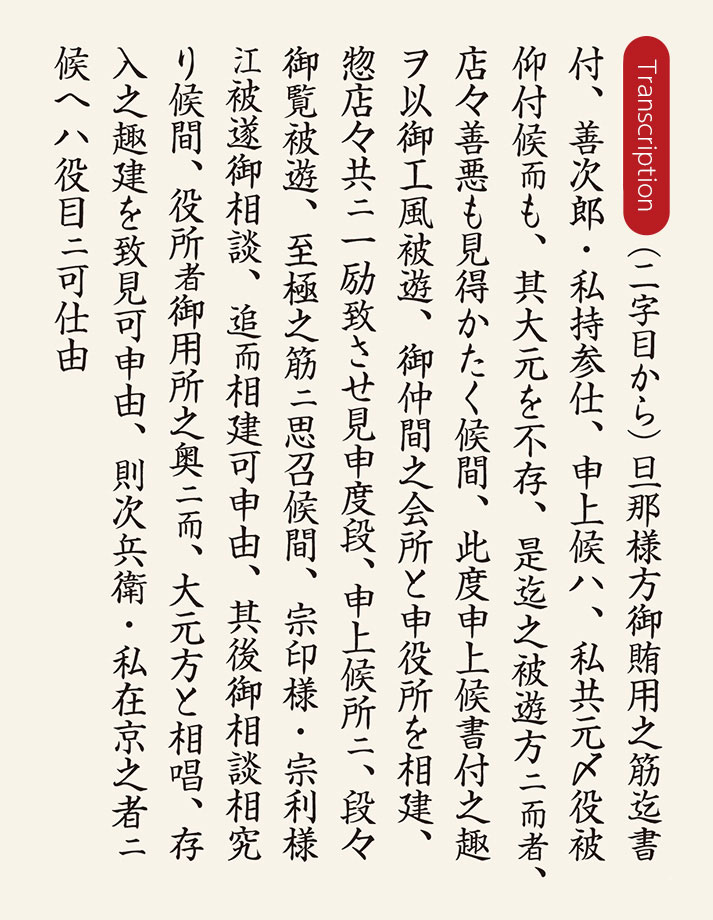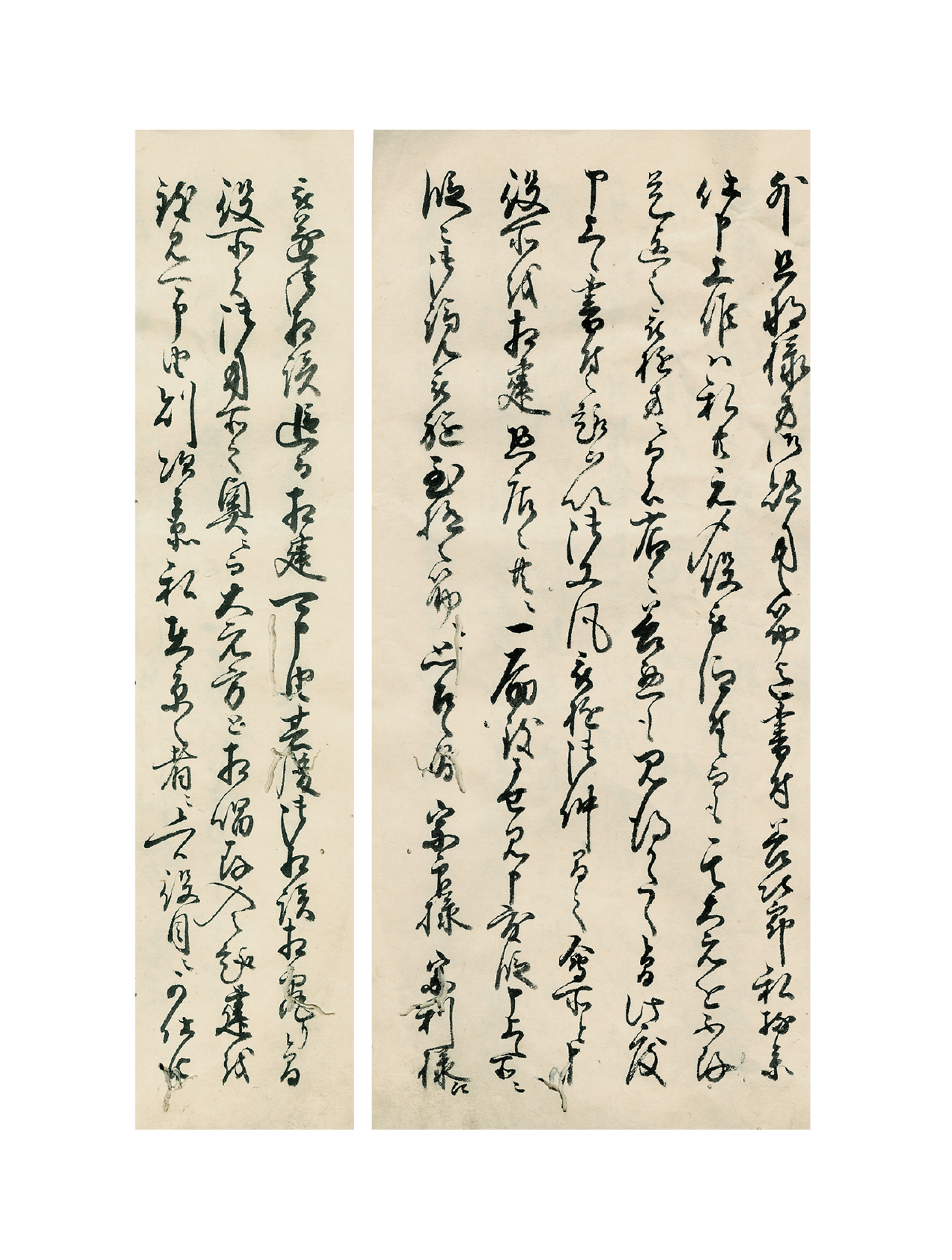07 Business Consolidation and the Omotokata
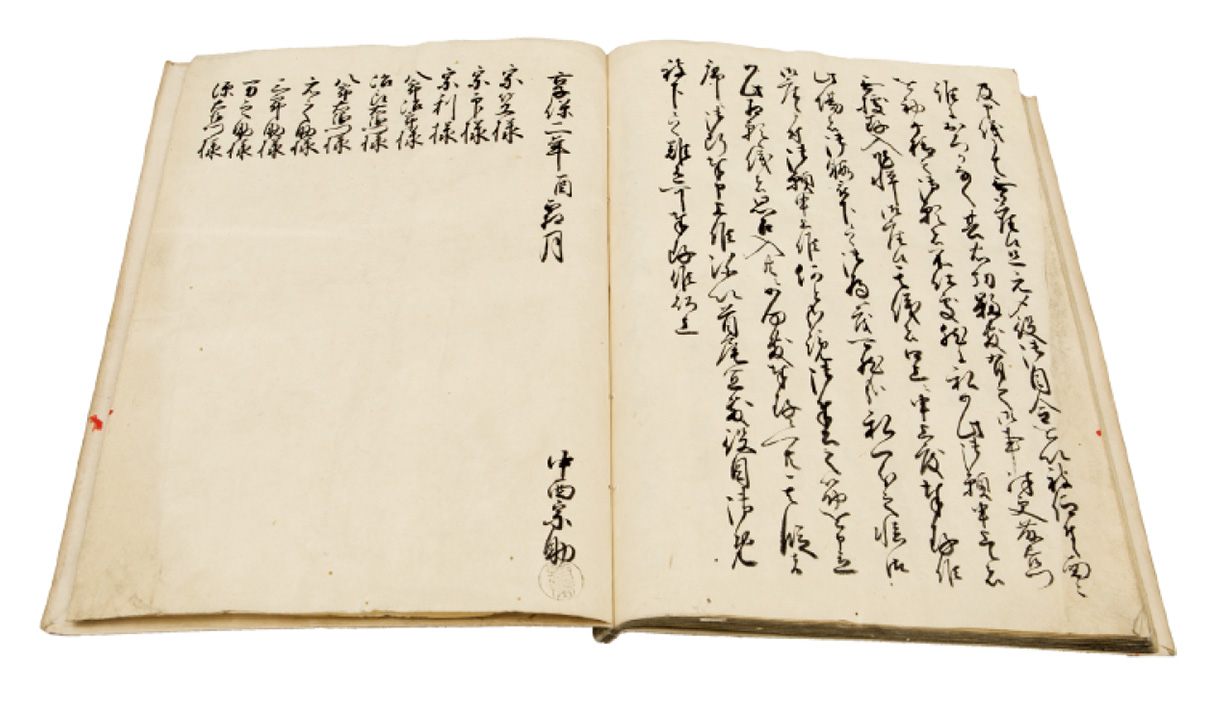
The Early Top Management
The document below is a record that recounts the history of the founding of the Omotokata, the organization that would characterize Mitsui in the early modern period. Nakanishi Sosuke-the man who urged on Takahira and his brothers and promoted its establishment-was a top manager in the early years.
Takatoshi excelled at selecting and training employees (→01). It is said that a manager named Shichizaemon-who was hired a few years after the opening of the Edo shop-is the one who quelled the unrest among the employees amid the intense harassment at the time (→03,05).
Later, capable workers would be trained at each shop, and gradually these individuals came to take over managing those locations. Prominent persons who can be seen in the document presented below include Nakanishi Sosuke and Kobayashi Zenjiro from the Kyoto kimono shop, along with Matsuno Jihe from the Kyoto money exchange store and Wakita Toemon (→03) from the Edo kimono shop, as well as Kaisu Zenbe from the cotton shop. These individuals exercised their talent at their respective shops, and greatly stirred the development of those businesses. They were called the “great experts” and the “restorers” of those shops. Their descendants were given appointments thanks to their great achievements, and their names became prestigious ones among employees.
Business Consolidation
With Takatomi’s death and his elder and younger brothers all aging, the top managers defended their shops as their own turf and, in a sense, acted as if they owned those places. Controlling the entire business-which had grown vastly-became difficult. Furthermore, the younger generation that had never known hardship liked to live extravagantly, and controlling their spending presented a new issue. The fact that business management consolidated in a single family-which Takatoshi’s children supported-was on the verge of a crisis in the near future had become a matter of concern.
This was the situation that lay behind the establishment of the Omotokata. Under the organization, all shops were reorganized to unify all businesses, and expenses of all the Mitsui Domyo (Mitsui descendants) were also to be managed comprehensively. At the end of 1709, the relationship between the Omotokata and each shop in financial terms had been settled (→Fig. 07b), and beginning in 1710 records of the Omotokata began to kept (→Fig. 07c).
However, the resistance from prominent figures at each shop was deeply entrenched. It took another two decades or more for a system for settling accounts to be arranged with the network of shops. The system established grouped all shops into either the “Hondana Ichimaki” division for kimono shops or the “Ryogaedana Ichimaki” division for financial-related businesses. It was put together for the Omotokata to absorb all of the assets that each shop had accumulated and then advance operating funds to each shop (→11).
Omotokata, the Central Administrative Body
The Omotokata was the leading council of the Mitsui Domyo and their employees. Together with the Mitsui Domyo, it supervised all of the family’s businesses, and it pulled together and managed all of its assets (→10,11). When it was established, each shop was made to thoroughly investigate and report on the state of its assets. With this, the Omotokata initially gained control of more than 8,864 kan of silver (slightly less than 150,000 ryo in gold). Though the value of money had declined, it was double that at the time of Takatoshi’s death (→01). The amount represents approximately 56 percent of the gold and silver that the shogunate spent during that same period in all of western Japan. Though many merchant clans were collapsing without anyone to take over as their heir, Takatoshi succeeded at nurturing the next generation.
Subsequently, with a severe recession striking, and as the children and top managers who had supported Takatoshi after his passing themselves began dying out, Mitsui found itself facing an age of crisis.

Written in 1717.
Nakanishi Sosuke was a leading Mitsui employee during the early modern period. He began his employment in 1687, and at a young age became a top manager at the kimono shop. He promoted consolidation of the businesses and the creation of new systems. The achievements he made were tremendous. The document here-which he sent at the risk of having to resign-counseled the Mitsui family to undertake thoroughgoing reforms (the left side of the image above shows his signature at the end and the document’s addressee). The original was held by the Omotokata.
Nakanishi also writes in detail about his own work history, and from this we can also learn about transitions in the business and employee roles. When it comes to the consolidation of the businesses in particular, this is an extremely valuable testimony from someone who promoted it.
Counsel from Nakanishi Sosuke to the Mitsui Family
Translation
Kobayashi Zenjiro and I (Nakanishi Sosuke) created a list of expenditures from all shops and of living expenses for all members of the Mitsui family. We brought this to Takahira. Our explanation to him was, “We are the top managers, known as the motojime. However, we do not know what is going on, and it is difficult to determine whether a given shop is good or bad under the old system. Based on the details of what we have told you now, we want to devise a new approach. We will establish an administrative office to be called ‘The Meeting Place of Business Group.’ There, we want to provide all the more encouragement to all shops.” Takahira looked over the documents, and said, “This seems very reasonable, so I will discuss it with my younger brothers Takaharu and Takatomo (→06). In due course, we shall set it up.” The discussions were concluded after this. The administrative office was set in the back of the charter purveyor’s shop. It was given the name of Omotokata, and Matsuno Jihe-who at the time was a top manager in Kyoto-and I (Nakanishi) were ordered to design it.
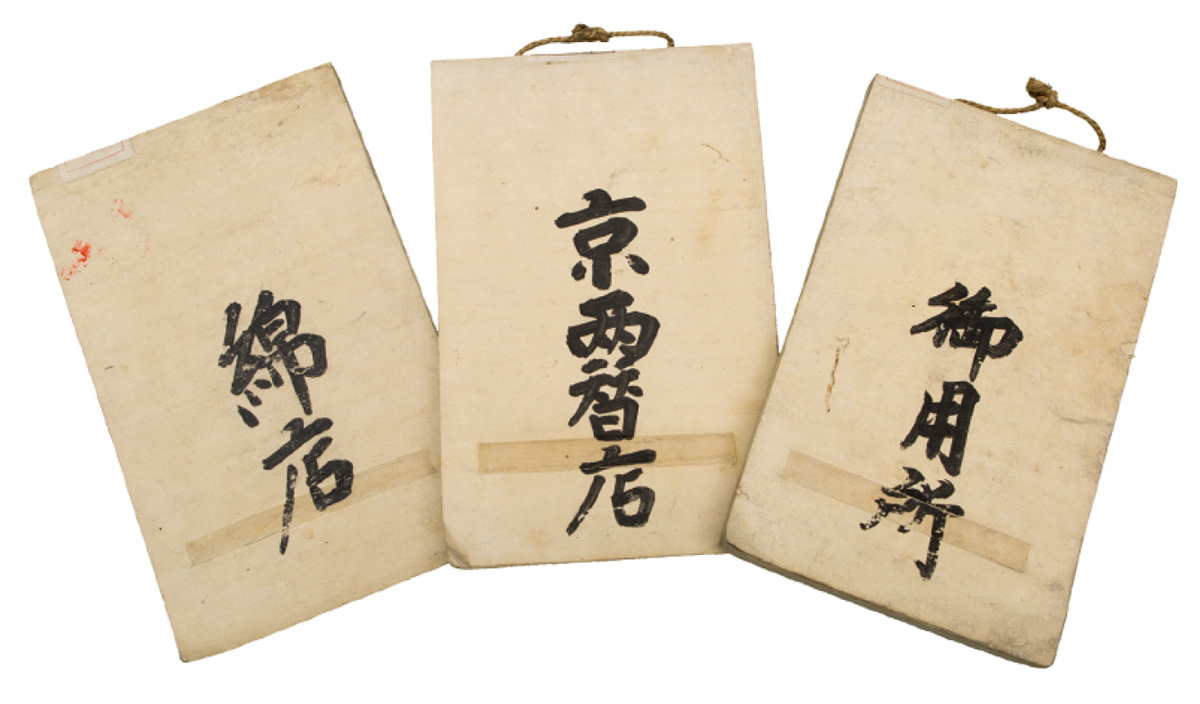
Created in lunar December 1709. With the establishment of the Omotokata, they set down how each shop should go about their business under it and sent notice to each shop in that regard. We know that copies for seven shops were made at the same time, and three of those remain today.
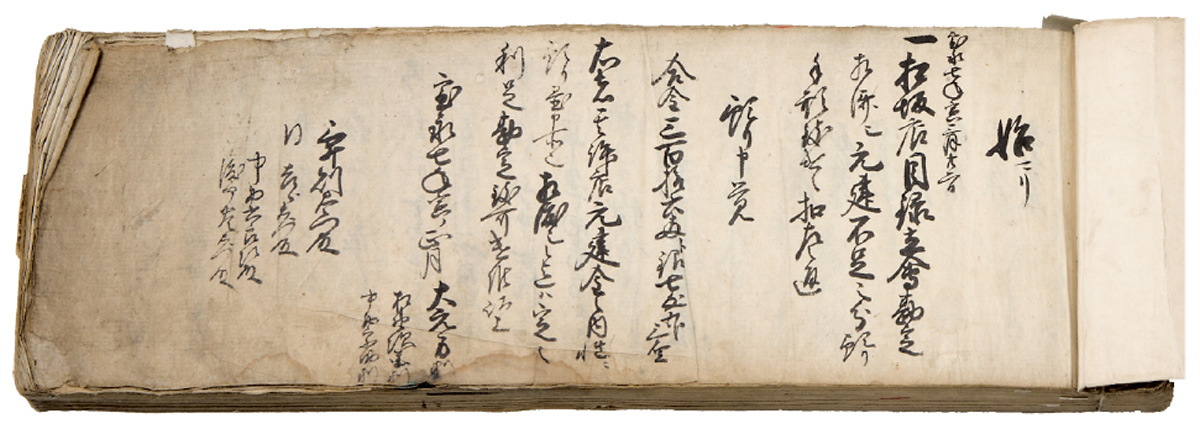
The first records of the Omotokata. Shown here is the opening page. At right is the word for “Begin,” followed by copies of notices dated January 1710 of the lunar calendar. What came later was the creation of a record called Yoriaicho. The present item also differs from the information record called Kikigaki (→21).

